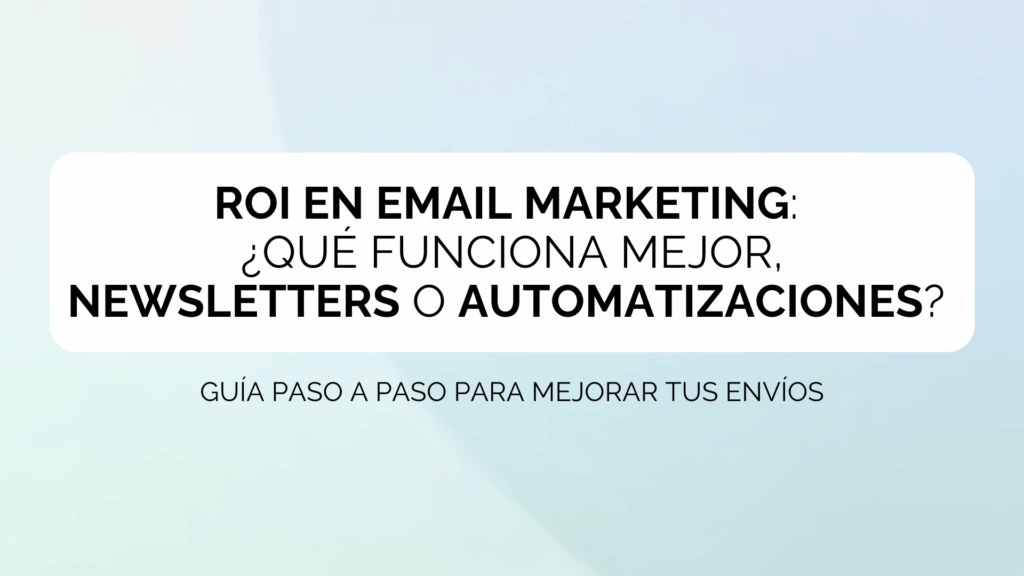Email Marketing ROI: which works better, newsletters or automations?

In email marketing, it's not enough to send attractive campaigns: what really matters is to understand what impact they have on business results. And this is where attribution comes in.
While the newsletters usually focus on regular communication and brandingthe automations respond to key moments in the customer lifecycle (welcome, abandoned cart, win-back, etc.). But the question we ask ourselves is... how do we fairly measure the return on investment (ROI) of each one?
In this post, we will see how to correctly measure the ROI of your email campaigns, differentiating the real impact of newsletters versus automations. In addition, we will also see the main attribution models, the metrics that are really useful and the keys to compare both formats without prejudice.
The challenge of attribution in email marketing
First of all, we would like to clarify the definition of attribution. This concept, as we refer to it, is to identify which campaigns contribute to a conversion (purchase, registration, download, etc.). The problem is that users often receive multiple impacts before deciding.
- Was the purchase generated by the abandoned cart email?
- Or was it also influenced by the newsletter sent out a few days earlier?
If we do not define the attribution model properly, we run the risk of overestimate or underestimate the ROI of certain shipments.
Key differences between newsletters and automations
- Newsletters:
- Main objective → generate recurring traffic and awareness.
- Advantage → reach a wide audience all at once.
- Challenge → difficult to isolate its direct impact on sales.
- Automations:
- Main objective → activate or re-engage users at specific times.
- Advantage → they tend to have higher conversion rates, because they respond to user behaviour.
- Challenge → can be inflated in attribution if measured only with last click.
- Main objective → activate or re-engage users at specific times.
Key differences between newsletters and automations
To properly measure ROI, it is important to go beyond the last click:
- First clickgives the value of the first email that led the way to conversion.
- Last clickassigns all the credit to the last email before the action.
- Linear: spreads the credit among all the emails with which the user interacted.
- Based on positionThe first and the last are weighted more heavily, and the rest are distributed in the middle way.
Data-driven (algorithmic): used machine learning to assign weight according to the actual impact of each interaction.
In practice:
- For newsletters, it is often useful to first click or linearThey often pave the way for the relationship.
- For automations, last click o data-driven allow for a better measurement of their timely effectiveness.
KPIs for calculating ROI
Beyond open or click-through rates, you need to connect to business metrics:
- Revenues attributed to the email channel.
- Average Order Value (AOV) generated by newsletters vs. automations
- Cost per shipment / per flow in front of the revenue generated.
- Customer Lifetime Value (CLV)especially in automations that promote retention
Practical recommendations
- Define a unified attribution model before comparing newsletters and automations.
- Integrate your email platforms with ecommerce or CRM to map the whole journey.
- Analyse in a segmented way: measuring new customers is not the same as measuring repeat customers.
- Periodically adjust your model: user behaviour and channel mix change over time.
In short, measuring the ROI of your email campaigns correctly requires go beyond the open rate and think in terms of attribution.
The newsletters build relationship and feed the funnelwhile the automations become important at specific points in time. A balanced analysis of both, under a sound attribution model, will enable you to optimising investment and demonstrating the value of the email channel.